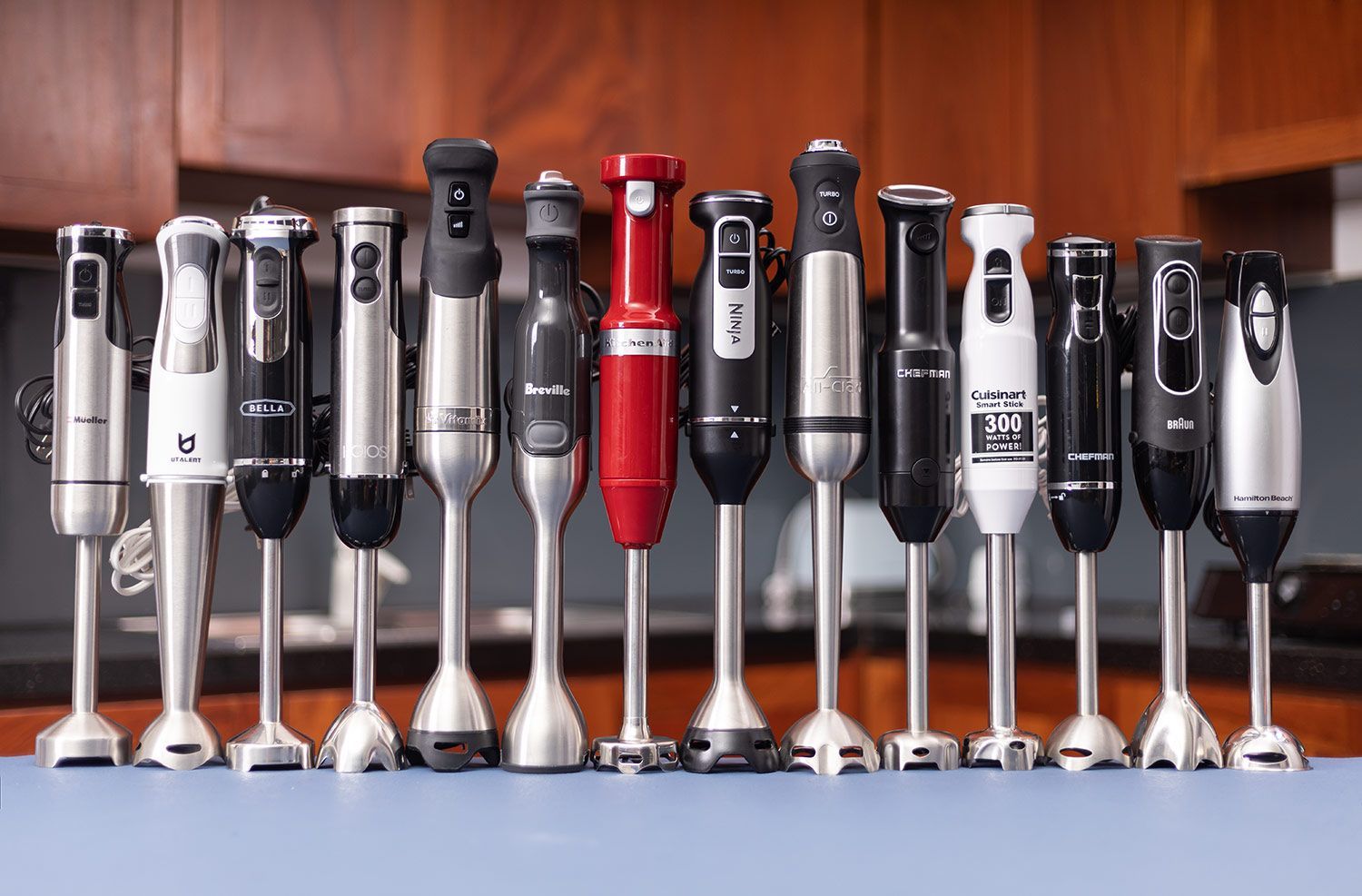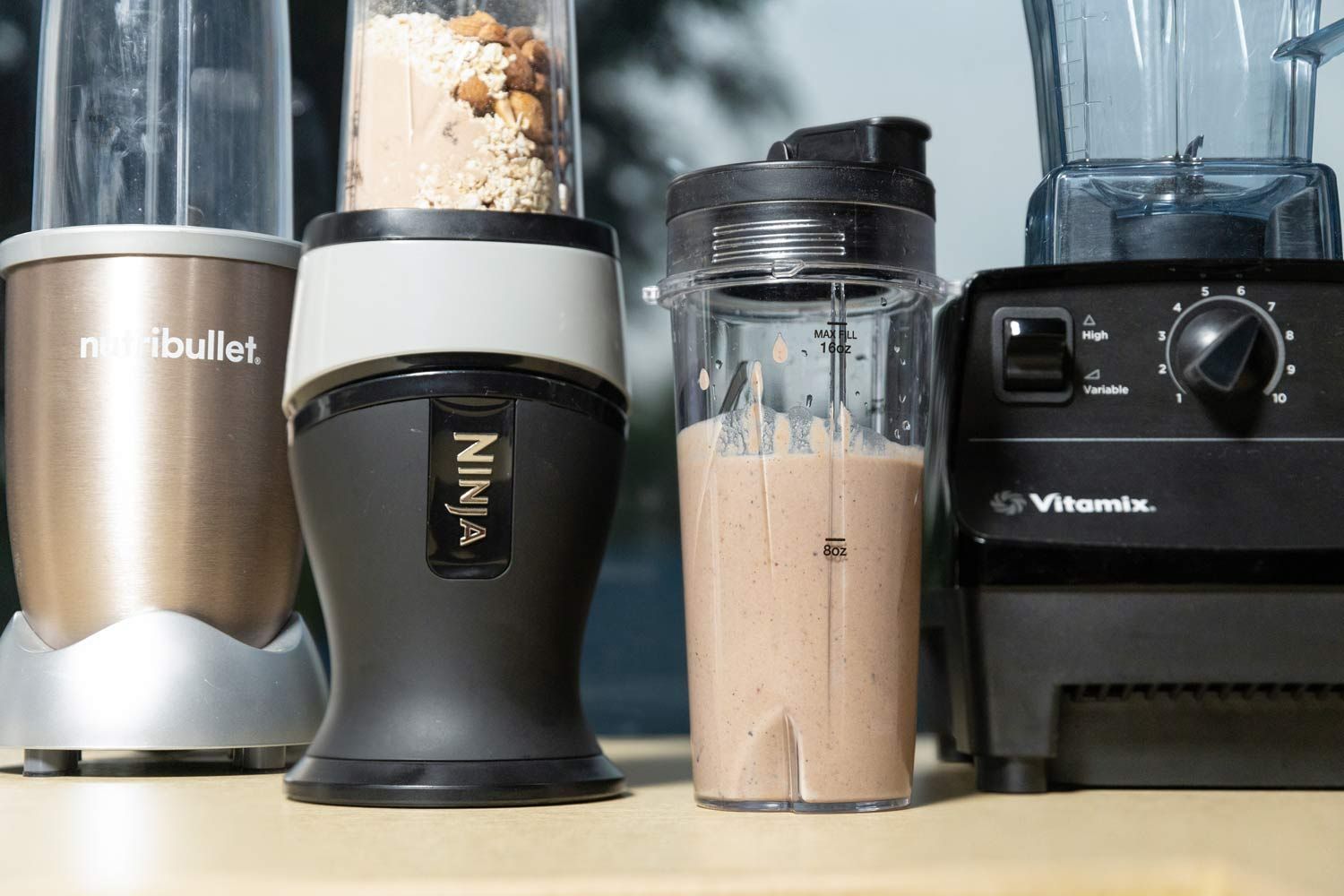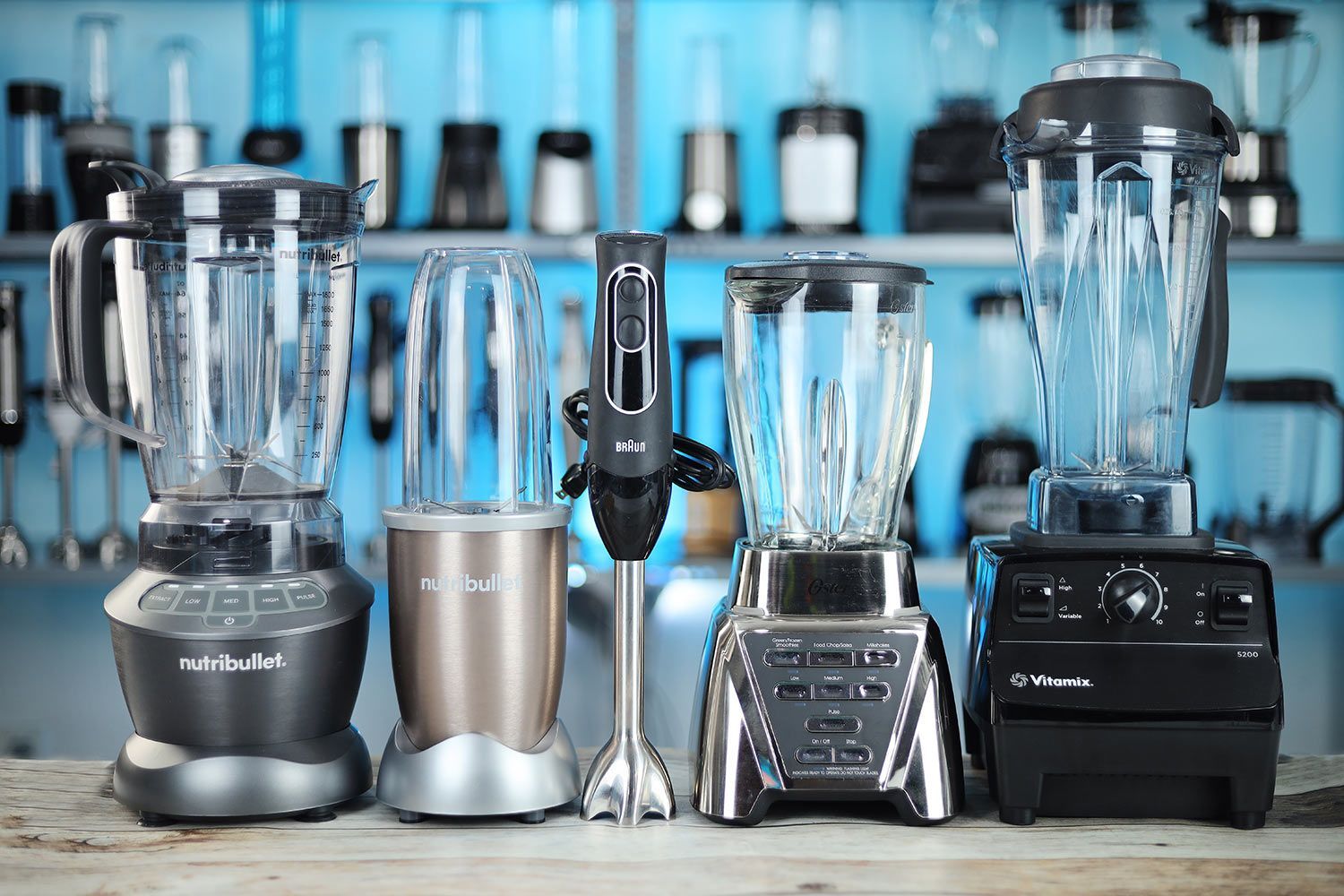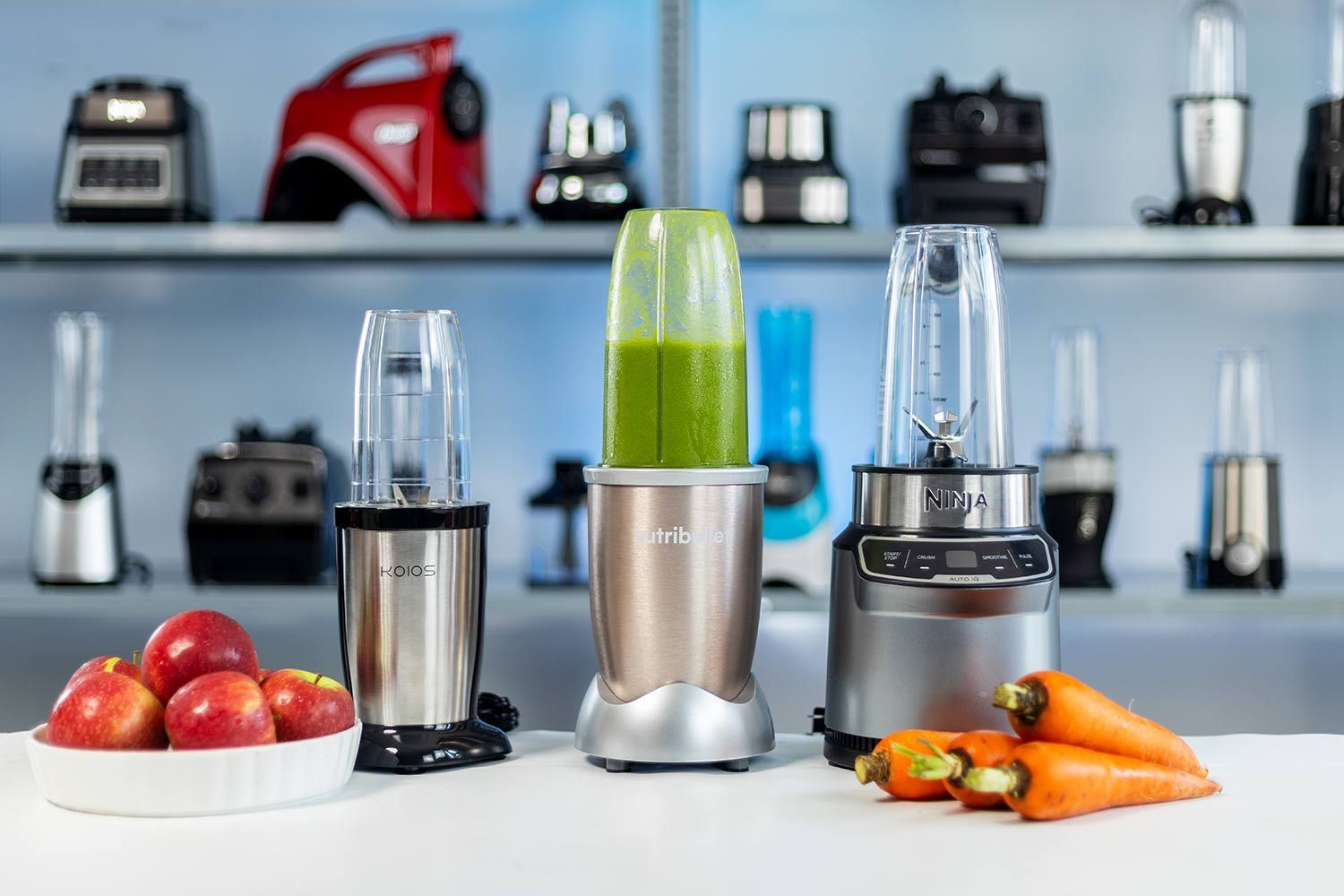Best Blenders for Smoothies of 2024 Tested and Reviewed
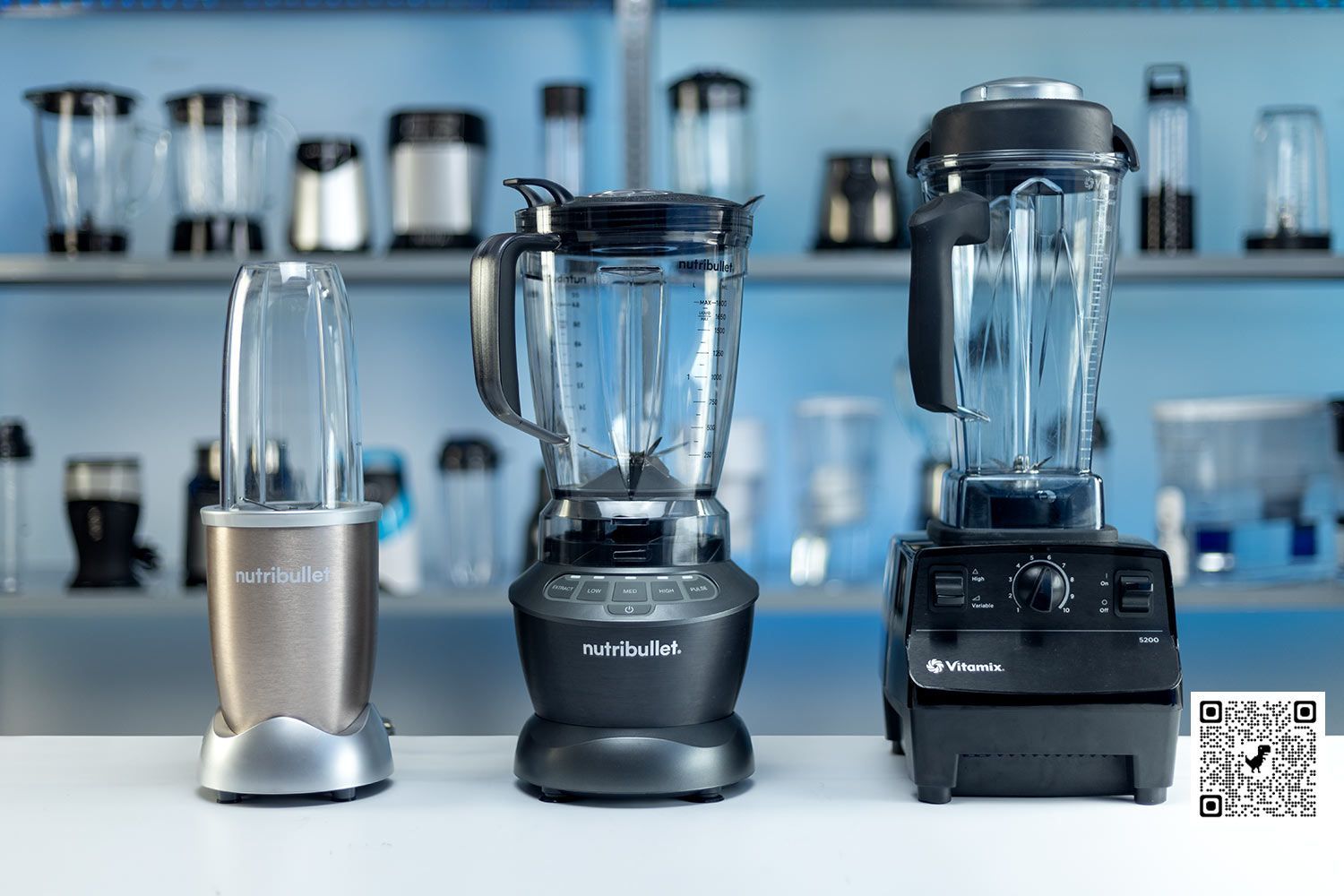
Just like painters need their brushes and gearheads need their wrenches, smoothie die-hards need their blenders. But not just any blender will do—we're talking about formidable machines that can turn the toughest kale into a velvety emerald blend, or frozen fruits into a chilly delight. At the same time, one shouldn’t forget delicate ingredients like chia or flax seeds for that extra healthy boost.
In our quest for the smoothest drinks, we've spun our way through a swirl of blenders, testing their prowess with some challenging concoctions. Will the cutting-edge Vitamix crush the competition or will a humble, more budget-friendly option steal the show? Join us in this comprehensive review of the best blenders for smoothies.
Reviews of the Best Blenders for Smoothies in 2024
After several months spent putting our pile of household blenders through a series of tests, we’re confident that our finalists are by far the best. Our extensive hands-on testing also teased out the pros and cons of each machine, so you can make the best choice for your own needs.
Here are our top three recommendations:
Best Overall: Vitamix 5200 Blender
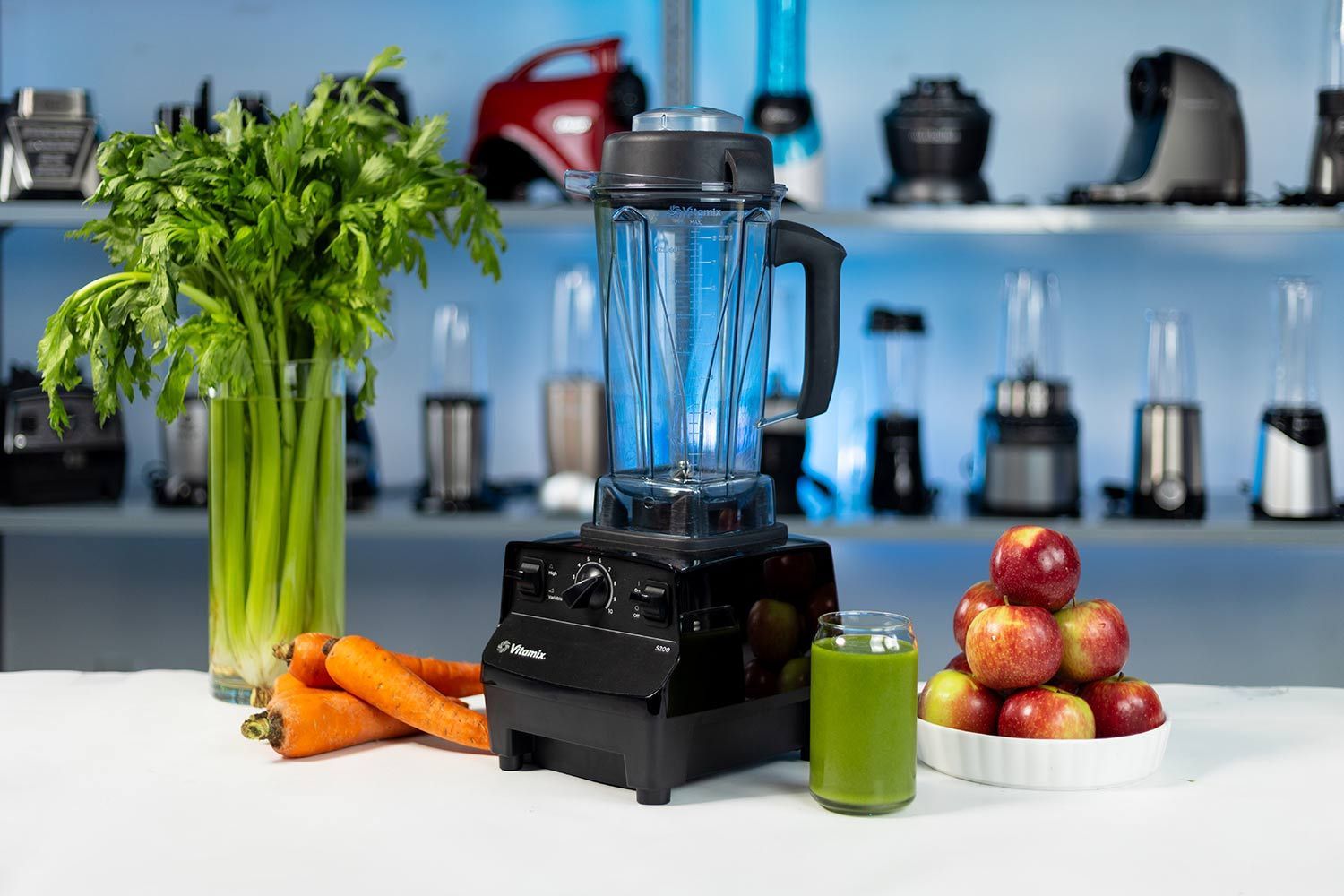
Things We Like
- Many user-friendly features, including the removable blade assembly
- Versatile speed settings for a diverse range of textures
- Capable of blending non-stop for up to six minutes
- Rapid and potent acceleration for efficient blending
- Excellent for both hot and icy blending applications
- The 64-ounce container is ideal for preparing family-sized batches
- The 7-year warranty is notably longer than other blenders
Things We Don’t Like
- The container does not lock onto the base
- Average ice-crushing capability
For those seeking the pinnacle of blending power and the smoothest of smoothies, nothing beats the Vitamix 5200. Its efficiency is unparalleled while user-friendly controls and hassle-free cleanup put it a step ahead of the competition on all fronts. Its only real drawback is the price tag, but given the Vitamix’s unmatched quality and durability, it should keep you blending for many healthy years to come.
Testing Performance
The Vitamix 5200’s efficiency comes down to three core design concepts. It’s got a 2-horsepower motor and a unique container design that creates a powerful vortex. The stainless steel high-speed blades then pulverize ingredients in mere seconds, be they hard frozen fruits, tough greens, or raw nuts.
For ice blending, the Vitamix 5200 performed adequately, but fell a little short of our hopes. It will produce perfectly chilled and refreshing smoothies, but not fluffy ice for cocktails or snow cones.
Build Quality
The motor of the Vitamix is made from die-cast aluminum and high-impact plastic. This combination is both durable and lightweight. Meanwhile, the glossy sheen of its black exterior exudes luxury and quality. Our tests also confirmed that the blending jug, which is advertised as a heat-resistant shatterproof copolyester material, does indeed resist accidental damage.
Ease of Use
The Vitamix’s elegant simplicity is reflected in its intuitive control panel. With clear labels and easy-to-adjust speed levels, you rarely have to consult the manual.
Assembly and disassembly is straightforward too. Although it takes some force to fasten the lid, it's easy to detach. The blender jug, however, lacks a locking mechanism and can sway when blending tough ingredients. Therefore, you’re best off maintaining a good grasp on the container handle while it runs. It’s not quite a set-and-forget operation.
Cleaning the slender interior of the blending jug can be a challenge for those with larger hands. The safest cleaning method is to use a brush to reach under the blades. Even better, you can just fill the jug with soapy water and run a rinse blend at high speed. If you don’t want to bother, though, the container is dishwasher-friendly.
Read our full Vitamix 5200 Blender in-depth review
Best Budget for Smoothies and Ice: NutriBullet Blender Combo 1200 Watt
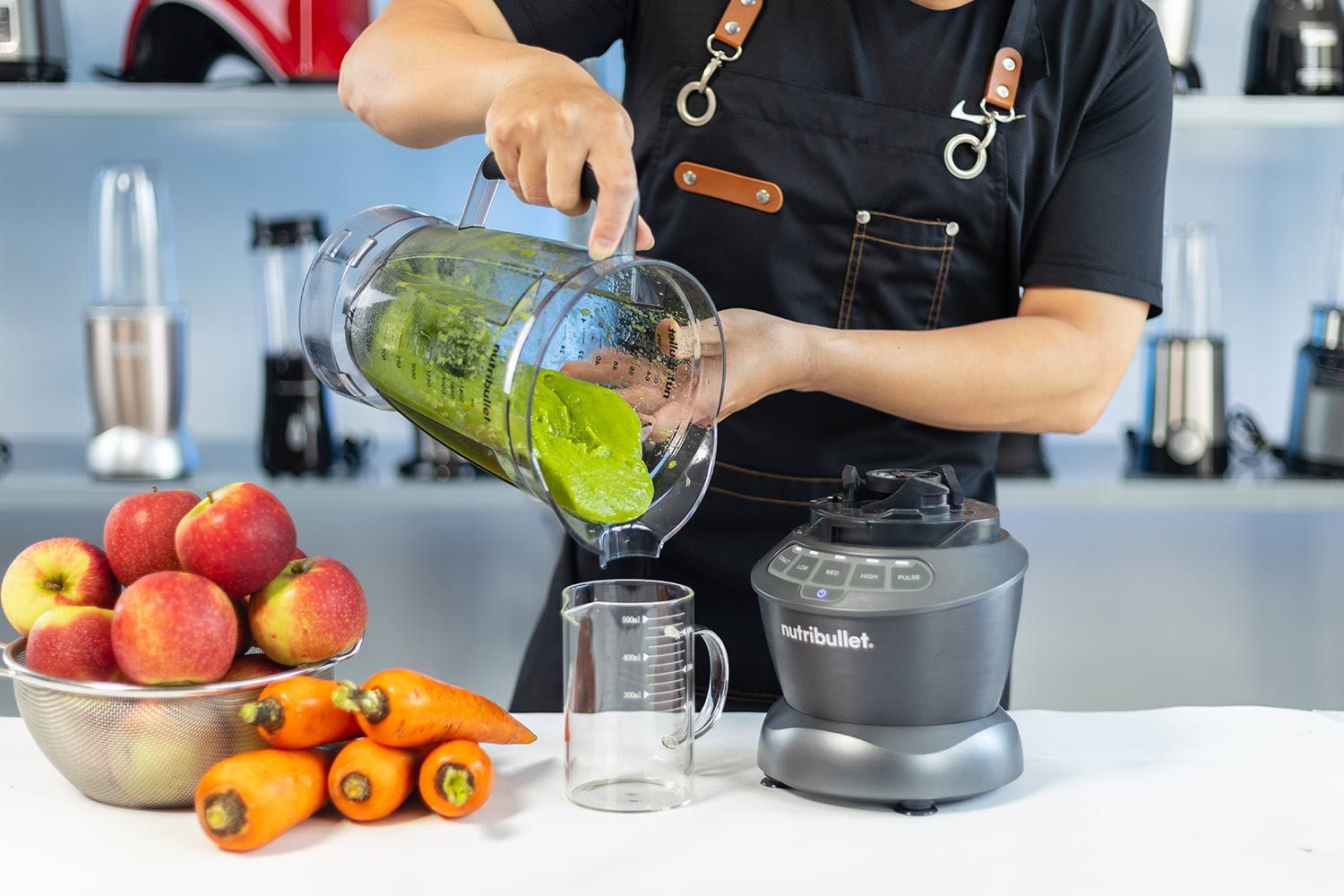
Things We Like
- Exceptional performance in creating smoothies from fresh or frozen fruits, protein shakes, and crushed ice
- User-friendly, thanks to its minimalist design
- Strikes a pleasing balance between price, functionality, and build quality
- Comes with a generous amount of additional accessories
Things We Don’t Like
- Falls short in its performance when making butter
- The blending container tends to detach from the motor during use, causing interruptions
- The cleaning can be frustrating
The NutriBullet ZNBF30500Z stands out as a reliable and cost-effective choice. It sells for a fraction of the price of the Vitamix 5200 but still does the trick for most tasks. It’s a standard jug-type blender but also comes with two handy bottle blender tumblers. Granted, the NutriBullet can’t match the volume, build quality, or functional features of the Vitamix, but you’ll get close to the same results and save almost $400! Furthermore, its portability and snow-ice blending prowess are tough to match.
Testing Performance
The blender weighs in with a 1200-watt motor, 4 robust blades, and rapid rotation speeds of 21,169 RPM. In just 30 to 90 seconds, any ingredient mix is transformed into a perfectly smooth blend. That’s much faster than most mid-range blenders.
Notably, in our green smoothie test, the blender left minimal fibrous particles. It also excelled in frozen fruit smoothies, accomplishing perfect smoothness in half the time of its rivals. Although it left the occasional strawberry seed or skin remnant, these barely detracted from the overall quality.
What really sets the NutriBullet ZNBF30500Z apart, especially compared to the Vitamix, is how it can turn a full 12 ounces of ice into fresh, fluffy snow in just 30 seconds. With this blender, you can enjoy smoothies with that perfect icy texture.
Build Quality
The NutriBullet clearly differentiates itself from other economical choices like Cuisinart SmartPower, Black and Decker 10-Speed Blender, and perhaps most pointedly, the whole Ninja line-up. The latter often compromise build quality for cost savings, but the NutriBullet avoids this pitfall.
The NutriBullet uses resilient, BPA-free plastic throughout—from the motor base to the blender bottles and lids. Furthermore, the high-quality stainless steel blades promise a service life beyond those of most similar competitors.
Ease of Use
Setting up this NutriBullet is fairly straightforward, although it’s a challenge to clean. We let the blender clean itself with soapy water at high speed, but some residue still clung to the blades and container's base. A bottle brush and sponge helped to some extent, but we couldn’t remove stubborn particles without a specialized brush with ultra-fine bristles.
We do think there’s room for improvement. The lid is difficult to open and close. Additionally, the locking mechanism between the jar and the motor base is not always stable.
Extra Accessories
The NutriBullet ZNBF30500Z showcases its versatility with a comprehensive array of blending containers and distinct blade assemblies. The primary 64 fl.oz. (1.8 L) pitcher boasts a unique six-pronged blade that outperforms the conventional designs of most mid-range competitors.
The four-pronged easy-twist extractor blade, meanwhile, is built for the set’s 32 and 24 fl. oz. blending bottles, transforming the whole thing into a personal blender suitable for individual servings. The take-away tumbler lids also have drinking spouts so they’re perfect for the gym or your commute.
Read our full NutriBullet Blender Combo 1200 Watt in-depth review
Best Personal for Smoothies: NutriBullet Pro 900 W Personal Blender

Things We Like
- It is very easy to assemble and use.
- Stainless steel extractor blades are tough enough to power through even solid ingredients like ice cubes.
- BPA-free plastic cups are durable and dishwasher safe.
- Hands-free operation offers superior convenience
- Motor base is very stable.
Things We Don’t Like
- It's difficult to clean the blades’ undersides.
For the perfect blend of performance, quality, and simplicity in a compact package, your search should end with the NutriBullet Pro. It’s a true champion in the personal blender category for small kitchen spaces and an on-the-go lifestyle.
Testing Performance
The NutriBullet Pro only has a 900-watt motor, but don’t be fooled! It surpassed all our expectations and whipped up a velvety frozen fruit smoothie in less than a minute. While it failed to fully mulch fibrous greens—a few leafy whisps remained—it still outperformed most other blenders and ranked in the top tier for a green smoothie blender.
Build Quality
The NutriBullet Pro's design shows careful attention to detail and material quality. The blade assembly, for instance, diverges from the typical two or four-pronged design for personal blenders. Instead it features six prongs made of superior-grade stainless steel. It’s able to reduce even leafy greens and ice to a fine consistency.
The quality of the high-impact, BPA-free plastic motor base is also worth noting. If you stick to the recommended blending intervals and allow it to cool as necessary, the motor will last for many years. Its durability and safety also extends to the portable blender bottles and lids.
Ease of Use
For usability, the NutriBullet Pro gets top marks. Assembly and cleaning are a breeze as is the no-fuss single-speed blending. Operation is also hands-free so you can multitask while your ingredients blend.
If anything, the NutriBullet Pro proves that simplicity and high-level performance are not mutually exclusive. This one compact package delivers much the same results as a larger countertop blender.
Read our full NutriBullet Pro 900 W Personal Blender in-depth review
Nearest Competitors
A few quick notes on other blenders we tested:
- Vitamix E310: Despite being $150 cheaper than the Vitamix 5200, the Vitamix E310 is a good contender for both smoothies and frozen blends. It even gets better marks on the ice test—12 oz of solid ice turns into a fluffy, snow-like consistency within just 30 seconds. However, it does lag in a couple of aspects like its small 48 fl. oz. capacity. The 5200 has a 64 fl. oz. pitcher to better serve large families.
- Ninja Fit: The Ninja Fit offers stiff competition to the NutriBullet Pro, and its sporty aesthetic is quite attractive. In our tests, it excelled against high-fiber foods such as leafy vegetables, berry seeds, or raw nuts. It was also adept at crushing ice, but unlike the NutriBullet Pro, the blending process is not so smooth. There were times when we had to pause and shake the blending cup to dislodge ingredients that were obstructing the blades or clinging to the container walls.
How We Test Our Blenders for Smoothies
In our testing laboratory, we put each blender through its paces to provide you with a comprehensive picture of its performance. Our reviews are the result of hands-on testing conducted by our team of reviewers, in-house technical experts, and culinary consultants.
Blenders fall into three categories: full-sized, personal, and immersion. When it comes to smoothies, the full-sized and personal blenders often take center stage.
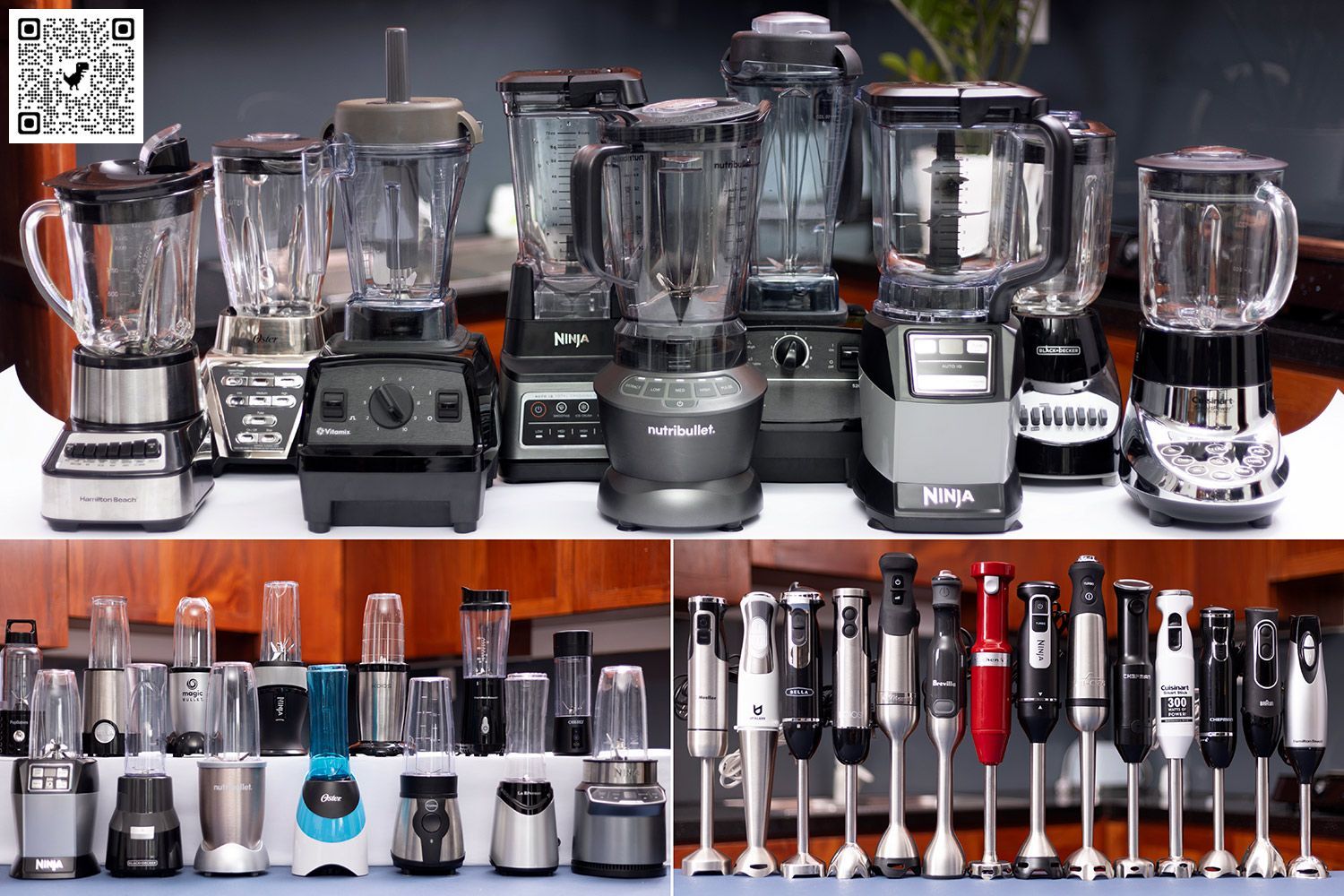
Although immersion blenders can be used for making smoothies, they don't deliver consistent results. They tend to only shine when blending soups, pureeing baby food, or whisking mayo. Accordingly, we excluded immersion blenders from these tests, focusing on personal and full-sized blenders.
We evaluate the basic performance of full-sized blenders by blending fresh fruit smoothies. After that, we check their capacity to handle frozen fruit and to crush ice. These frozen tests show us the limits of the machine’s power and durability.
Personal blenders are gauged on their performance with frozen fruit smoothies and also fibrous greens. In short, we want to make sure they can handle hard items, cold items, and tough, leafy ingredients effectively. An ice-crushing test is also equally important to verify their robustness.
These tests were carefully designed using common smoothie ingredients, allowing us to gauge the practical performance of each blender. And although the tests and evaluation criteria for personal and full-size blenders differ, they all go through the same tests.
We record each testing process on video so we can go back and compare the footage with our notes for better reliability and objectivity.
In addition to the drink’s smoothness, we also prioritize timing as a key factor in each blender's performance. We use a stopwatch to accurately record how long each test lasts. This helps us limit bias and human error.
Before the actual testing takes place, we run a series of ‘trial tests’ to check for flaws in the logic and practicality of the tests themselves, and make adjustments accordingly.
How Our Recommendations Are Made
Recommendations are based upon the testing results and their associated scores. We take into account the specialized strengths of a product, the situation it’s best suited for, and the personal circumstances where it will fit best.
Things to Keep in Mind When Buying a Smoothie Blender
Choosing the right blenders is just as important as choosing your ingredients. And it goes beyond visual appeal, price, or even power ratings. Do you want a sleek design and adequate performance, or are you looking for optimal convenience even if it comes at a premium? You have to understand not only the blender’s specs but also your own needs in order to make the right choice
1. Types of Blenders
Full-Sized Countertop Blender
Full-sized or countertop blenders have the most powerful motors and rank as your heavy-duty option. Our tests have shown that their robust motors can handle the toughest ingredients such as ice and frozen fruits. Full-sized blenders are an unbeatable choice for fans of frosty beverages or frozen smoothie bowls with ice cream consistency. Furthermore, their larger blending jugs mean you can make multiple servings at a time, so they’re perfect for families or entertaining.
Of course, a large motor means a large footprint, so they occupy more counter space and may not fit comfortably under some kitchen cabinets. Furthermore, some don’t have dishwasher-safe parts and occasionally you can’t even remove the blade. That will make cleaning more of a chore.
Personal Blender
If you value convenience and portability, or simply need to save space, a personal blender may be the best choice for you. These blenders are specifically designed for single-serving use. Moreover, the blending cups often double as travel tumblers. Some people call them ‘bottle’ or ‘portable’ blenders. These are excellent for when you need to quickly blend and go.
The downside is that portable blenders often struggle with hard ingredients like nuts, ice, and frozen foods.
2. Power and Rotation Speed
Power, measured in watts, refers to the amount of energy that a blender's motor can output in a given time. The motor turns the blade, whose rotational speed is measured in revolutions per minute (RPM). Motor power and rotation speeds generally correlate.
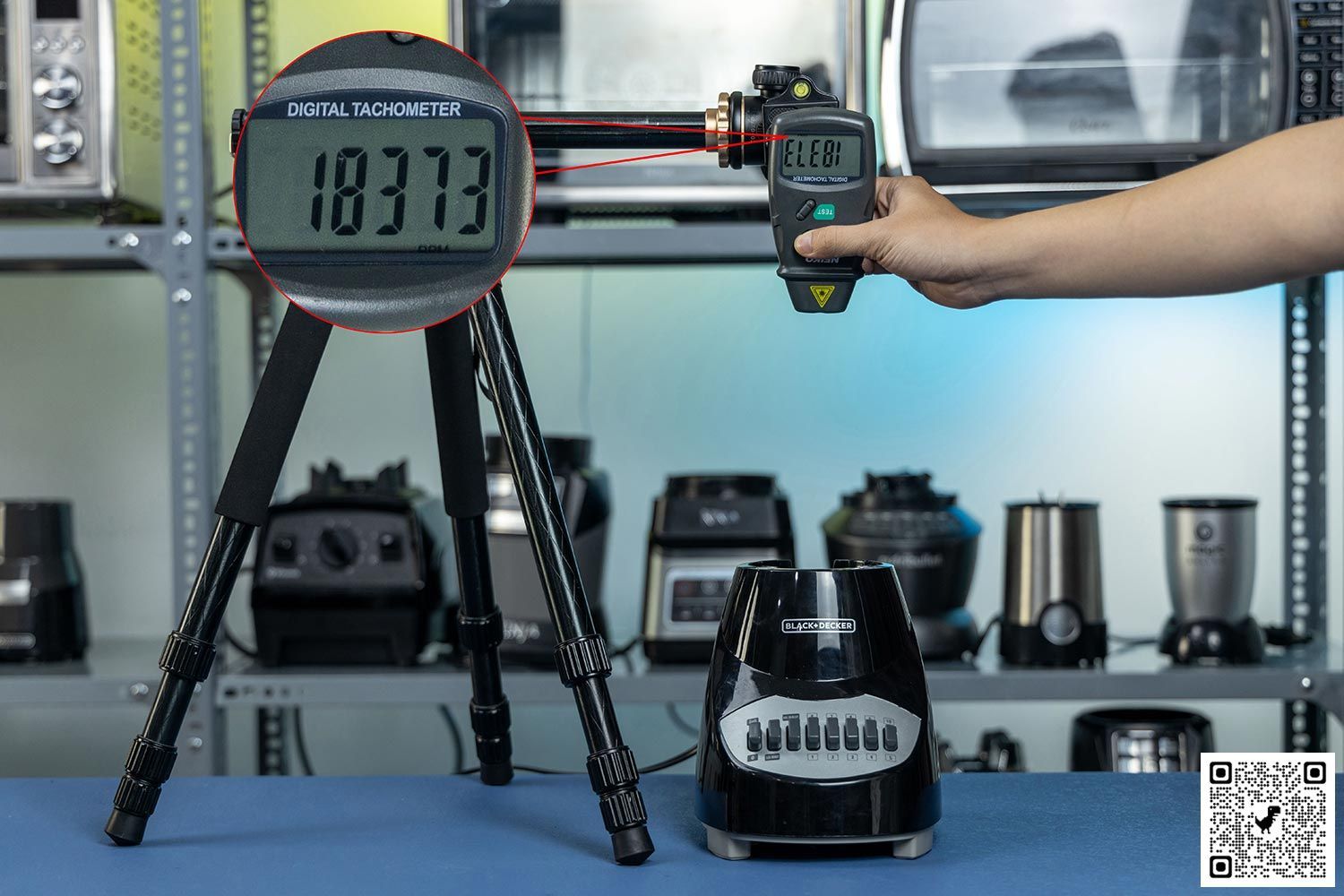
Blenders with less powerful motors—those around 600 watts—can easily handle fresh fruit smoothies. However, their slower blade speeds (around 20,000 RPM) mean they’re not as effective at blending raw nuts, leafy greens, or ice cubes.
Furthermore, different speeds are needed for different tasks. Lower speeds are ideal for stirring and mixing, while higher speeds are necessary if you want to puree or liquefy ingredients.
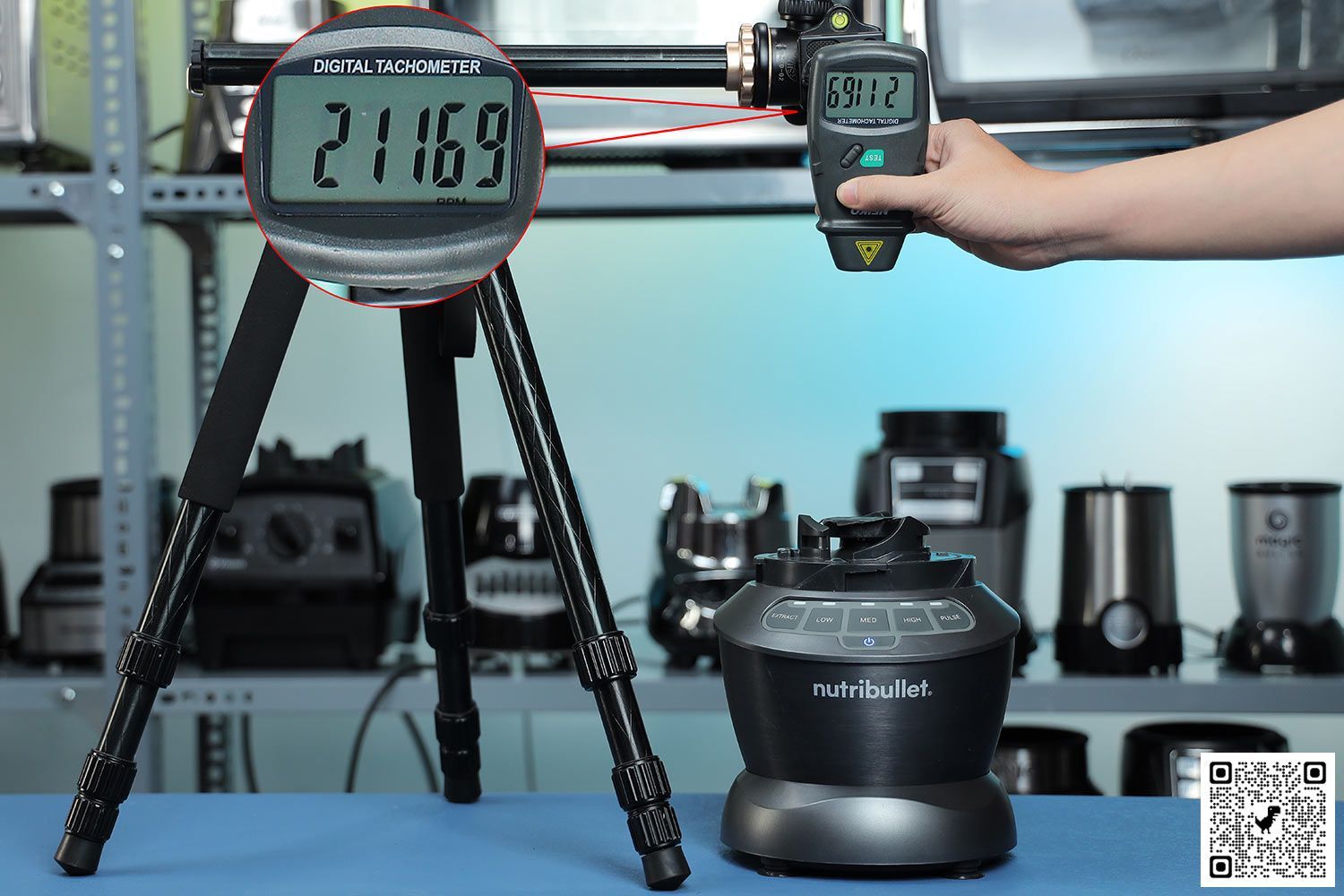
Mid-powered blenders have motors that peak at around 1000 watts and can reach speeds of up to 24,000 RPM. These blenders strike a balance between power and affordability and they can also handle heavy tasks. Our tests pinpointed several blenders in this class which are well worth considering. Image
Blender motors that exceed 1500 watts can achieve rotational speeds of up to 40,000 RPM. These are considered premium models and cost more, but they offer exceptional performance. One notable advantage is their ability to process any type of ingredient. Additionally, these high speeds can generate friction heat that is beneficial for certain recipes.
3. Blade
Blender blades are made from stainless steel. However, different designs are tailored to optimize performance with specific ingredients.
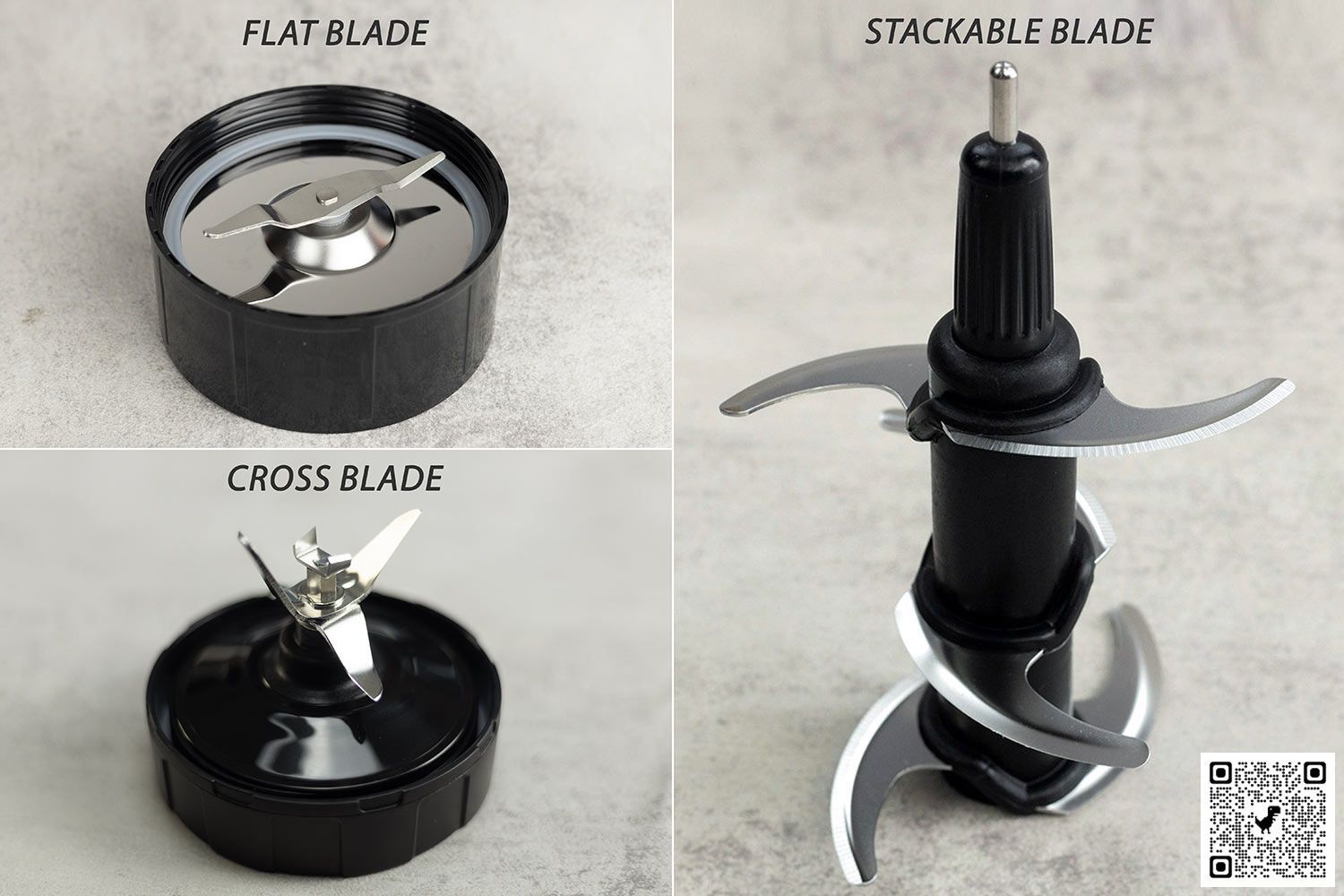
- Cross blade: This blade design features four or six prongs arranged in a cross pattern. More prongs allow for increased contact with ingredients during blending. The result is often a smoother and finer mixture. Cross blades are prominent in both full-sized and personal blenders. In the case of full-sized blenders, the blades are positioned slightly above the container's base. Manufacturers vary in their approach to blade attachment, with some opting for removable blades and others preferring fixed ones. Fixed blades reduce the likelihood of leakage but may present challenges when cleaning.
- Stacked blade: The stacked blade style is found exclusively in Ninja blenders. It consists of six stacked blades affixed to a plastic shaft that extends from the base to the lid. It looks impressive, but our findings indicate that while it excels at chopping and grating, it struggles with actual blending—especially leafy greens—due to the inefficient pull towards the blades.
- Flat blade: The flat blade assembly is only available for personal blenders. It consists of two prongs tilted slightly upwards. This type of blade is dull and primarily designed for dry grinding tasks, such as grinding rice or whole grains. They are usually accessories meant to expand the capabilities of your personal blender.
4. Speed Control
The speed control options in blenders can vary depending on the type and model.
For personal blenders, single speed models tend to work out the best. They're budget-friendly, straightforward to use, and easier to clean. In most cases, you just hold the cup down to blend, but some models are hands-free. It’s best to avoid preset functions and stick to more efficient single speeds.
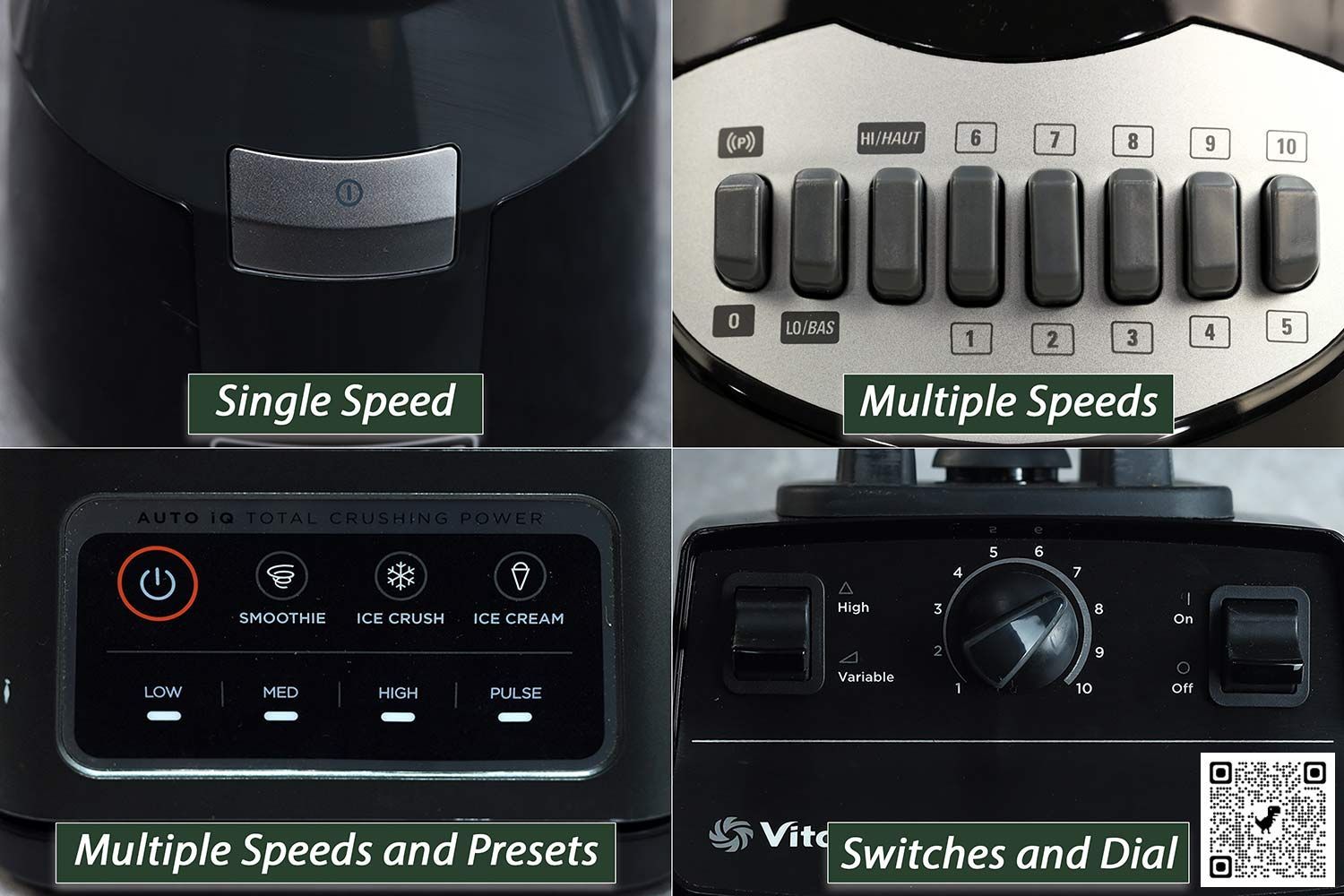
Most full-sized countertop blenders have a range of speed settings. Some models also have preset programs for extra convenience. However, our tests found manual operation in terms of speed and duration to be as effective or better than any preset function. As such, it's best not to rely on presets, and you probably shouldn’t shell out extra money just to get them.
Regarding the type of controls on full-sized blenders, they can be found in the form of pressing buttons, using a switch, or adjusting a dial. The choice of these options is more about personal preference as their ease of use is equal and may not significantly impact the blender's overall efficiency.
Why Trust Us
We purchase all the blenders of our own accord and for testing purposes only. We do not procure sponsorship or donations and have no stake in the reputation of the brands.
Our testing procedures are data-driven, transparent, and collaboratively developed. We establish most testing procedures in house, but we consult with outside experts when necessary. Each test is rigorous and transparent; we detail the process, provide the data, and present evidence.
Since we are testing kitchen equipment, we have a team of professional cooks that help us evaluate the results of tests, including taste-testing where necessary.
Our Expertise
Tina is a seasoned tester who’s been with us at Shouldit since 2018. She brings with her a wealth of experience in different types of blenders including immersion, personal, and full-sized models. Her most recent testing initiative was a result of her collaboration with Chef Tuyet Pham and Test Lead Lap Vo. Together, they conducted in-depth research, developed a test process, and analyzed the recipes.
Over the course of two years, Tina and her team have tested more than 35 blenders using a combination of laboratory-style testing and real-world usage scenarios. They wanted to evaluate the appliances not only in their new condition but also after months of regular use. Their methodical execution and attention to detail resulted in accurate and reliable testing results.
